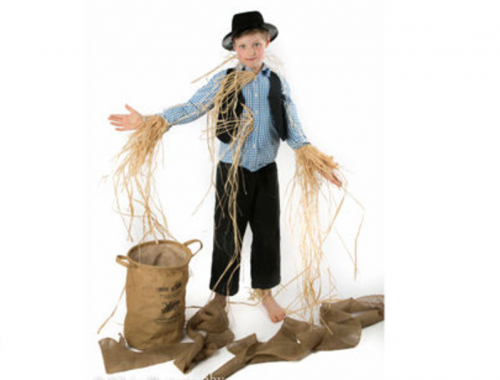When most new mums bring their freshly-minted babies home from the hospital, they are still in that wonderful stage where all they do is sleep. Then…whoa. They wake up. And some babies wake up with a vengeance, discovering their lungs and their likes and dislikes quickly. Others fuss.
Fussing is hard to read: you don’t know exactly what is bother baby, and it quickly becomes frustrating, especially to women whose nether regions still feel like they’re on fire and who need sleep, a shower and to have fluids stop dripping out of various body parts.
I remember with my daughter, my first child, laying her down on the couch and just running away to the bathroom to sob for five minutes (she was safely swaddled, no chance of rolling off–she was only six days old) because I couldn’t get her to stop fussing.
Post-partum depression, nerves, hormones, whatever, it sucked. Now, however, I’m an old hand. Four kids have taught me a lot, and what I didn’t learn myself, I learned from other, even more experienced and insightful moms. Read on. These aren’t cure-alls, but they all help somewhat…you may have to use them all at various times, or invent your own techniques, because all kids are different, just like all moms.
1. Change their position. Some babies don’t like being on their backs, or their tummies. With my daughter it was her back–she despised it with a passion, from day one. My husband actually figured out the trick: the magical, wonderful, heaven-sent football hold. Yes, my husband walked around with her draped over his arm (cupping her chin in his palm, with the length of her torso supported by his forearm), her legs and arms akimbo. She adored it. He took her everywhere like that from then on, and he didn’t care a bit at the weird looks some people gave him, because our baby was happy. So if your baby is fussy, try changing his or her position.Perhaps their arm has fallen asleep. Maybe they like seeing things, or they don’t. It may be as simple as that.
2. Is it gas or constipation? Ah, yes. The elusive burp or fart. Newborns, especially hungry ones, tend to take in a lot of air when they suckle, whether it’s a bottle or a booby. This results in gassy tummies, especially in very young babies whose digestive systems are still getting used to food. A gassy fussy baby grumbles and whines; learn your child’s expressions, you’ll figure it out before long. If they’re squinching up their faces, it may be pain. Before switching formulas or something drastic, try positioning them on their tummy. Try my husband’s patented football hold, or, with an older baby (they should be able to hold up their head), drape them over your forearm, with their belly down, to see if that’ll force a bubble out of either end. Or, put them in a sitting position, holding their hands and letting them lean forward a little bit, putting pressure on the abdomen. I also found laying a child across the tops of my thighs and rubbing their back effective, too.
3. Music. Ah, music soothes the savage beast, and it works on a lot of babies, too. Lullabies or classical music is appropriate for infants, because fast music can stress them out. Older babies may find a fun, faster-paced song distracts them. Find something they like; you’ll probably end up wearing a groove in the CD or finding that the iPod gets stuck on that track on replay.
4. Massage. Whether it’s stress, fatigue, or gas, massage is almost always a good technique to try on a fussy baby. Read up on good and appropriate form online or buy a baby massage book. You and your child will enjoy it.
5. Motion and Vibration. Whether it’s a bouncy seat, a swing, a ride in the car or a session on top of the washing machine in their carseat (don’t leave them unattended…), you’ll often find motion and vibration will ease fussiness. However, some babies don’t want mechanical soothing, they want YOU. Ah, I remember many a night doing MY patented bouncy-step routine: my daughter (she was the fussiest of all my children) draped over my forearm or, occasionally, propped onto my shoulder, while I patted her rhythmically on the back and took one bouncing step after another. Practically wore a groove in the carpet between bed and kitchen. She’d eventually calm down and sleep, and I’d collapse. It’s a good workout, though!
6. Diaper Change. This may seem like a, “Well, duh!” move, but you’d be amazed how many sleep-deprived moms and clueless new dads forget to check the diaper. Most babies HATE to be wet or messy. Sure, they hate being changed, too, but by quickly getting them into a new diaper and doing something else like massage, motion or music, they’ll often calm down quickly.
7. Food. Another “Duh” suggestion, but it’s a good one, especially for babies being weaned from the breast or bottle. Offering up a snack, like a bottle of juice or a safe cookie/cracker/biscuit, will often calm them down.
8. Teething Remedies. Is your baby fussy, drooling rabidly, slightly feverish and with a runny nose? Are they chomping down on things (like a finger or–ouch–your nipple) and gnawing energetically? Forget the studies that say these aren’t signs of teething: we ALL know it’s true. A teething baby needs something to chew on, whether it’s a teething ring, cold damp washcloth, a finger, or whatever is handy. It helps push those sharp little teeth through the gum faster and gives them something productive to do. A little Baby Oragel, a baby ibuprofen, and a lot of patience can help them through it.
9. Swaddling. Infants often dislike the feeling of being free, after nine months of tight and comforting confinement within your body. That is why swaddling is so effective: it recreates the womb. It feels warm, safe and familiar, so learn how to do it properly. If your baby is flailing around and working themselves into a frenzy, they need help bringing themselves under control, and swaddling is one of the best ways. For an older baby, wrapping them in a light blanket and holding them firmly yet gently can often prevent a full-blown tantrum, but please, be wise and don’t hold too hard!
10. Stimuli–or Lack Thereof. Newborns and infants are often overwhelmed by the volume and intensity of visual and audible stimuli. They’re accustomed to dimness, muted shapes and sounds before birth. Imagine being suddenly yanked from a nice, warm bed at night and thrown out into the middle of the street in the middle of broad daylight. You’d fuss, too, right? Lights and sights hurt undeveloped eyes. So, if they’re tiny babies, dim the lights, lower the volume, and see if they calm down. Combine that with swaddling, motion, or massage for even more effectiveness. Or, in an older baby, they might be bored. So, stimulate them! No, plopping a baby down in front of a tv isn’t the answer every time, but short, measured and purposeful videos can actually help develop a baby’s brain. Colors, shapes and meaningful objects, when combined with the right music, can help stabilize the brainwave pattern of a crying child. If Dora the Explorer or something else is the ticket, use it. Or, talk to your baby. Make faces at them (not scary ones), tickle them a little, sing to them, take a walk outside or just around the house with them, so they get a change of scenery.
As I said, none of these are 100% effective. As you get to know your baby better you’ll have more success. By combining techniques you’ll discover what works and what doesn’t. Don’t stress out if one thing doesn’t do the trick, because something else eventually will. Oh, and tip number 11: be kind to yourself, because a stressed-out Mommy ends up with a stressed-out baby.




[…] 10 Ways to Soothe a Fussy Baby […]